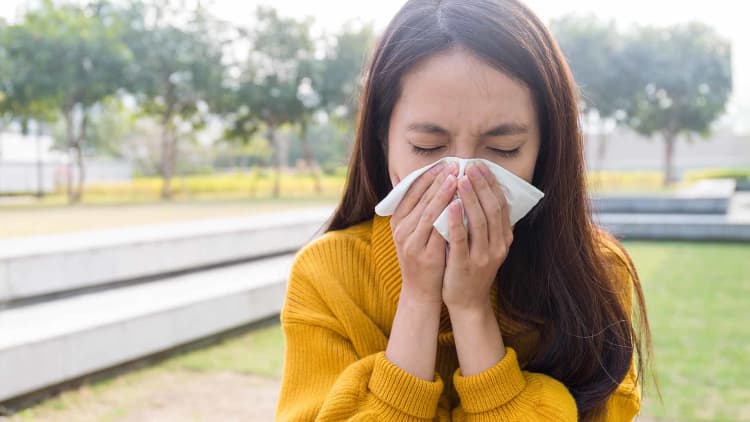We all love travelling, and I for one love beach holidays and hiking off the beaten track.
There are many things Singaporeans love to bring back from our travels, but a bad skin rash is certainly not one of them.
Bedbugs were all over the news headlines recently, with Scoot and Singapore Airlines passengers complaining of being bitten during their flights. Unfortunately, bed bug bites are just one of the skin conditions that I often see in returning travellers.
Here are 5 of the most common conditions seen by skin specialists in Singapore, and how you can prevent them:
1. Bed bug bites
Bed bug bites occur frequently in accommodations where people come and go quickly. Examples include:
- Back-packer’s accommodations
- Hostels and motels
- Camping sites
Even fine hotels and establishments are not spared - the responsible bedbugs in the Singapore Airlines incident appear to have a preference for travelling business class!
What are the signs of bed bug bites?
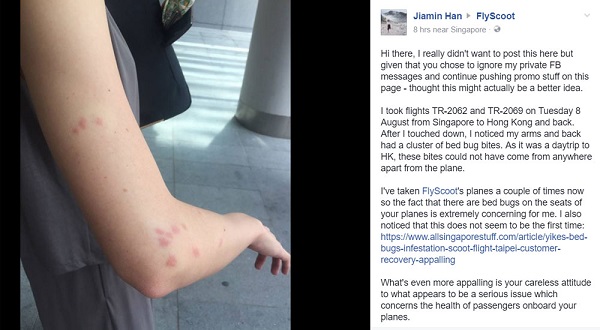
Bed bug bites are often not painful, but it leaves itchy red bumps on the exposed areas of the body, such as the neck, limbs and feet.
Initial bites may leave little reaction, but subsequent bites are often worse. These present with redder and itchier bumps.
How do you spot bed bugs?
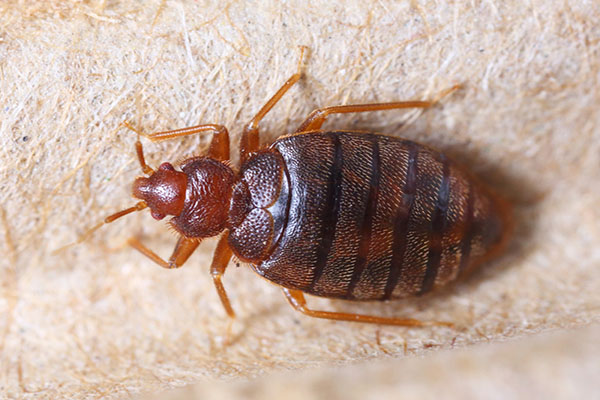
The adult bed bugs are often 4 to 7 mm in size, and brown in colour. Their eggs are whitish, and about 1 to 2 mm in size.
They tend to hide in areas that are not immediately apparent, like cracks and creases between the furniture and mattress, and in bedside furniture.
Luggage bags may often bring the unwelcome bed bugs home, so it's preferable to keep luggage off the floor and on luggage stands.
How can you prevent bed bug bites?
Follow these steps whenever you arrive at a new accommodation:
- Do a quick survey of the room and look for any signs of bed bugs. Focus on the bedframes, beneath the mattress and on the headboard.
- Sleep in long sleeves and pants, as bed bugs don't usually bite through clothing.
- Apply insect repellent on your exposed areas, like your neck and feet.
How to treat bed bug bites
Bed bug bites often resolve with antihistamines and topical steroid creams. You can see your doctor for these medications to alleviate the itch, and speed up the resolution of the rash.
2. Arthropod bite (Sand-fly and insect bite reactions)
Insect bites and sand-fly bites are very common on beach holidays, hiking trips and farm visits. They can completely ruin your holiday, so beware and be careful!
I recently had a patient who developed very bad insect bite reactions on her legs during a farm-stay holiday.
What are the signs of insect bites?
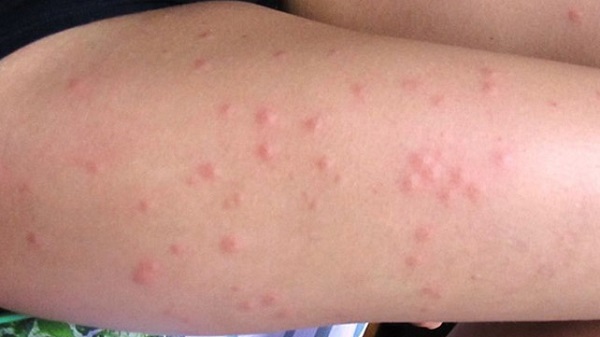
Initially following the bite, you may develop wheals that settle quickly.
However, some people react to the salivary protein that is deposited by the insect. Over the next few days, the bump will become increasingly red and itchy.
This allergic reaction to the insect bite can persist for weeks. When it settles, it can leave unsightly brown marks, which take several weeks or months to fade off.
Mosquito bites can also cause other serious infections like malaria, dengue and chinkungunya, so prevention is always better than cure.
How to prevent insect bites
Wearing long sleeves and pants, and using insect repellent helps to prevent insect bites.
If you have a lot of itchy red bumps from insect bites, remember to minimize scratching as that can aggravate the rash.
How can the doctor help?
Seek treatment early with your doctor or dermatologist, as oral antihistamines and topical steroids can be prescribed to settle the rash faster. This also minimizes any marks left behind from the bites.
3. Eczema flare
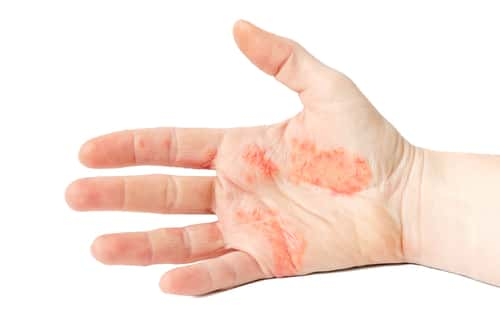
Ski holidays are getting increasingly popular - I myself love travelling to cold climates to escape the Singapore heat. However, the winter climate is cold and dry, and even the airplane cabins have very low humidity.
If you have dry and sensitive or eczema-prone skin, the low humidity alone is enough to make the skin drier and itchier, leading to an eczema flare. This is often termed as "winter itch".
What are the signs of eczema?
When eczema develops, the skin is dry, itchy and red. Scratching will aggravate the skin rash, so it's important not to succumb.
(Also read: 10 Things Your Doctor Wants You To Know About Eczema)
How to prevent eczema flares
To prevent any flare-ups, it's important to bring your moisturizers when you travel. Use them regularly and liberally, even before you develop the itch and rash.
It's also important to use gentle soap-free cleansers. I'm often tempted myself to use the pretty scented soaps in the hotel bathrooms, but these often make the skin even drier.
Avoid wearing woollen clothing too, as this can aggravate the skin itch.
How to treat eczema flares
In mild cases of eczema, the use of gentle soaps, moisturizers and antihistamines may be sufficient to control it.
In more severe cases, topical steroids are usually needed to control the eczema flare, so you may wish to consult your doctor or dermatologist.
4. Cutaneous larva migrans (worm larvae in your skin!)

Visiting beaches and lying on the sand may sound like a great idea, but this increases your chances of developing a rather interesting skin condition called cutaneous larva migrans.
What are the signs of cutaneous larva migrans?
As the name suggests, this condition is caused by the presence of hookworm larvae in your skin.
The larvae move and migrate in the skin randomly, leading to a bizarre red and snake-like pattern on the skin, often termed a "creeping eruption". These have sometimes been mistaken for varicose veins. The rash is often very itchy and can last for weeks to months.
How can you prevent these unwelcome guests from crawling around your skin?
The larvae are found in the faeces of infected dogs or cats, and contaminate the sand and soil. To avoid catching this, it's best to use picnic mats to prevent direct contact of your skin with sand and soil.
Walking barefooted in these areas is also not recommended.
How is it treated?
This condition is self-limiting, as the larva cannot survive and mature in the skin. However, the skin itch and rash can last for weeks.
Treatment with oral anti-parasitic medication will destroy the larva, and leads to rapid resolution of the symptoms within days.
5. Sunburn
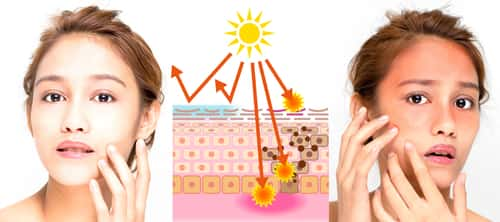
Many of us will probably have experienced sunburns during our holidays. Sunburns are common as we spend a lot of time outdoors without the proper attire and protection.
Singaporeans tend to spend a lot more time outdoors when the climate is cool and less humid, increasing our chances of a burn.
Do note that you can still get a sunburn on cloudy days! Swimming underwater also DOES NOT block out the UV light that causes sunburn.
What happens during a bad sunburn?
With sunburn, the skin is fiery red and painful. In severe cases, blistering can occur. This usually heals over the next few days, with peeling or desquamation of the skin.
How do you prevent sunburn?
To prevent sunburns, remember the BCS of sun protection - Behaviour, Clothing and Sunscreens.
Behaviour – avoid deliberate sun exposure. There's no such thing as a healthy tan, as tanning is a response to skin damage. In the long term, the risk of skin cancers and skin aging is increased. So seek shade and avoid the sun, especially between 10 am to 4 pm, when the UV index is most intense.
Clothing – wear protective clothing. Broad-rim hats and umbrellas block out UV rays, and should be used whenever outdoors. Wearing long sleeves or UV protection sleeves are also very helpful.
Sunscreens – this should be applied every time you go outdoors. Apply broad spectrum sunscreens with an SPF of at least 30, with concomitant UVA protection. This is best applied 30 mins before going out in the sun, and then reapplied every 2 to 3 hours, especially if you go swimming or perspire a lot as the sunscreen will be washed away.
What should you do if you are sunburnt?
Most cases of sunburn are not serious, and will resolve without any problems. Here are some steps to take if you do get sunburnt:
- The first thing you should do when you get a sunburn is to avoid further sun exposure.
- Oral NSAIDS (Non-Steroidal Anti-Inflammatory Drugs) can be taken to reduce the pain and inflammation.
- Applying moisturizers over the skin may help to relief the discomfort, and a cold compress on the skin can be very soothing.
- Drink lots of fluid too as you may become dehydrated from the sunburn.
In severe cases (when there is accompanying fever and more than 20% of the body is involved), you should consider seeking medical treatment from your doctor.
What do I recommend bringing on your travels to prevent these common travel-related skin conditions? Here's my own essential travel kit:
- A good broad spectrum sunscreen with both UVA and UVB protection.
- A broad rim hat and umbrella.
- Oral antihistamines. These are useful for itch relief, and help a runny nose too!
- Soap-free cleansers and moisturizers. These are particularly important if you have dry and sensitive skin, and plan to travel to a cold and dry climate.
- A topical steroid cream. These are useful for insect bites and eczema flare. You can get this from your doctor, who will also advise you on the proper use of the medications.
So travel safe, travel smart and have a great holiday!
Dr Colin Theng is a dermatologist at The Skin Specialists & Laser Clinic. He loves sports like table tennis, and still plays tennis at a social and competitive level. Dr Colin also actively participates in his church musicals and outreach programmes. Dr Colin is also featured on our list of dermatologists you should consider going to for skin treatments.
Dr Colin Theng is also featured in our list of dermatologists to go to for skin treatment.



